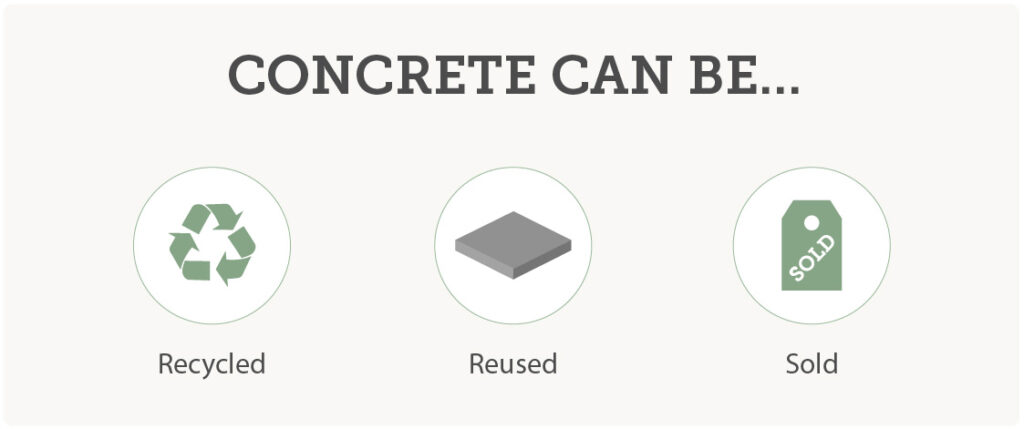Commercial redevelopment focuses on repurposing property with present structures. These projects often involve removing existing facilities and infrastructure, so tasks like concrete demolition and removal are often an important step in the process.
Developers frequently focus on the commercial demolition cost, but there are other aspects to consider (and some of them can actually help reduce the overall price tag of the project).
The demolition aspect of property redevelopment is about much more than simply tearing down a building and removing debris. In addition to the obvious safety issues associated with this type of job, real estate developers should also consider asset recovery, environmental impact, and site integrity.

Developers should always work with a commercial demolition contractor who can complete the tear-down procedure safely, salvage and process the old material, so it’s ready for reuse whenever possible, and ensure the project is completed on time and on budget.
What to Know About Asset Recovery & Concrete Recycling
A well-planned, professionally-executed project can bring environmental benefits while also helping developers recover materials that they can reuse.
It isn’t easy to see value in old structures, but they often contain materials like metal, concrete, wiring, and glass that can be reused either in raw form or after processing. Some buildings even have pipes, appliances, machinery, generators, and electrical fixtures that can be reused. The more materials and other assets you salvage, the less you have to spend on new materials.

Recycling benefits your budget, but it is also good for the environment. According to the EPA’s most recent statistics, an estimated 600 million tons of construction and demolition waste was generated in 2018. Not only does asset recovery reduce this, but it also lowers the carbon footprint that comes along with the production and shipping of new materials and systems.
What about the costs of processing these salvaged materials? An experienced contractor like Elder Demolition can demolish concrete and crush it into gravel onsite so that it is ready for reuse. This eliminates several expenses, including the cost to purchase and ship new gravel and the price of transporting the old concrete to a landfill and dumping it.
Understanding Building Site Improvement
Concrete is a durable material, but it sometimes needs to be removed during redevelopment. For example, concrete slabs can sink, compromising the integrity of anything built on top of them. In addition, cracks, surface damage, and climate-related issues such as frost heave can also warrant demolition.
Occasionally, the redevelopment process calls for removing features or structures that aren’t compromised to replace them with new designs or to simply landscape over and place structures on a better site on the property.
Regardless of the reason for the removal, materials removed for site improvement are almost always candidates for recycling.
